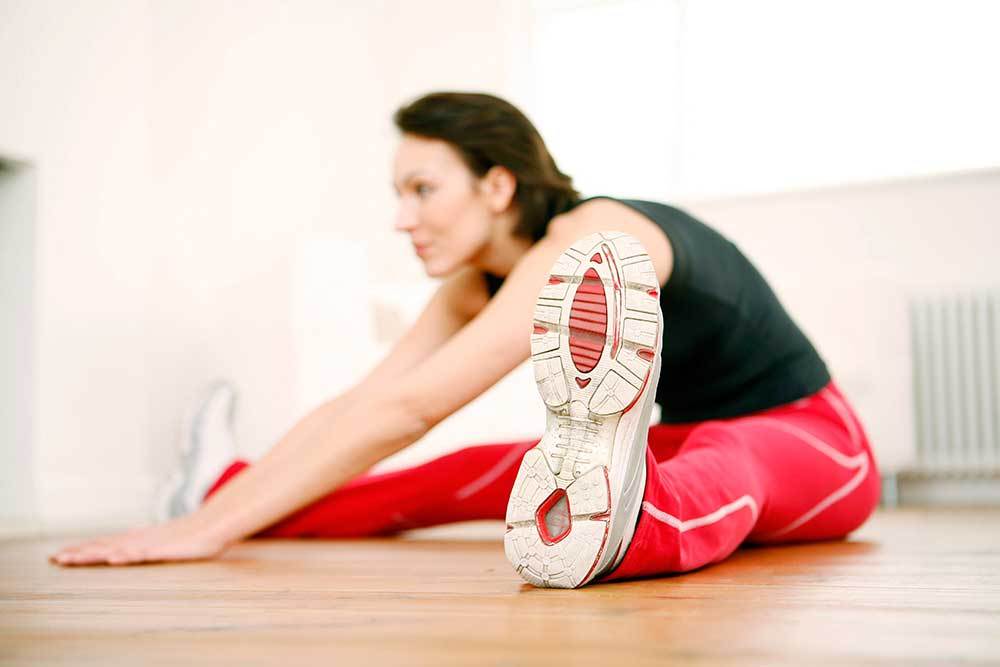Your Cart is Empty
FREE SHIPPING OVER $45 & RETURNLESS REFUNDS

Unless you’ve been orbiting a distant star with no communication to Earth, you’ve surely heard that exercise is essential to your health and well-being. A lack of exercise can even shorten your life. You don’t have to run marathons, spend hours bulking up in a gym or swim across the English Channel to reap exercise’s benefits. The American Heart Association recommends at least 150 minutes per week of moderate-intensity exercise or 75 minutes of intense exercise. Moderate-intensity exercises include swimming, cycling, dancing, “slogging” (slow jogging), briskly walking, doubles tennis and even housework and gardening. Even if you’ve never exercised, studies confirm that it’s never too late to get started — and your life may depend on it.
First, let’s understand why exercise is so crucial to our health. There are so many reasons why we need regular physical activity that we could write a book about the subject. We all know regular exercise helps maintain a healthy weight, but it plays a more significant role in our health and well-being. For this post, we’ll stick to the most important reason we need to exercise regularly — longevity.
A recent Norwegian study found that people who had not been physically active for 20 years had a twofold greater risk of premature death than those who led more active lifestyles. Researchers analyzed data from the Nord-Trøndelag Health Study (HUNT), a 22-year-long study that evaluated physical activity levels of Norwegians during three periods: 1984 – 1986, 1995 – 1997 and 2006 – 2008.
Dr. Trine Molholdt led the study and analyzed physical activity data of 23,146 men and women from the 1984 – 1986 period and the 2006 – 2008 period. Her team divided participants into three groups, those who were always inactive, those who exercised less than two hours per week and those who exercised more than two hours per week.
Using the Norwegian Cause of Death Registry, the researchers linked physical activity data from the two periods to the risk of death. They adjusted for factors such as age, sex, blood pressure, smoking, education level and body mass index. Overall, they found that compared to the active group, the inactive group had twice as much risk of premature death from all causes — and an almost threefold higher risk of early death from cardiovascular disease.
You might be wondering if participants who were active at some point during the 22-year-span had lower risks of premature deaths. Dr. Molholdt’s team found that for those who changed from inactive to highly active between the two measurement periods had a mortality risk that fell between the inactive and continually active. In contrast, those who switched from highly active to inactive had about the same chance of premature death as the continually sedentary group.
According to a 2012 study, “physical inactivity is a primary cause of most chronic diseases.” This study found that a sedentary lifestyleleads to 35 chronic health conditions such as premature aging, obesity, high blood pressure, diabetes, metabolic syndrome, cardiovascular diseases,many types of cancer, reproductive diseases,osteoporosis, depression, erectile dysfunction, gallbladder diseases, rheumatoid arthritis,cognitive diseasesand many more.
Given these findings, which are backed up by a multitude of other studies, it’s no surprise that physical inactivity significantly increases the likelihood of premature death by two or three times that of people with active lifestyles.
The 2012 study authors even looked at studies conducted with identical twins, including a Swedish study that tried to determine if there is a genetic component to being more physically active. Researchers compared to activity levels of 26,000+ twins when one twin was inactive and the other was highly active. It found that physical activity reduced the active twins’ risk of death by 34% for men and 25% for women. The Swedish study’s authors concluded that the reduced mortality risk was not due to genetic selection.
The 2012 study’s authors explain that many people confuse physical activity with physical fitness. They describe how the U.S. Centers for Disease Control and Prevention (CDC) differentiates physical activity from physical fitness. The CDC defines physical activity as, “Any bodily movement produced by the contraction of skeletal muscle that increases energy expenditure above a basal level.”
In contrast, the CDC defines physical fitness as, “The ability to carry out daily tasks with vigor and alertness, without undue fatigue, and with ample energy to enjoy leisure-time pursuits and respond to emergencies. Physical fitness includes a number of components consisting of cardio-respiratory endurance (aerobic power), skeletal muscle endurance, skeletal muscle strength, skeletal muscle power, flexibility, balance, speed of movement, reaction time, and body composition.”
The study’s authors conclude, “Physical activity primarily prevents, or delays, chronic diseases, implying that chronic disease need not be an inevitable outcome during life.”
As we noted above, we don’t have to spend hours hitting the pavement, pool or gym to reduce our risk of developing a chronic disease. Simply moving around more as we go about our day-to-day tasks and incorporating regular, moderate-intensity exercise into our weekly routine significantly lowers our risk of chronic disease — which reduces our risk of premature death. If you’ve never exercised or it’s been a while, it’s never too late to start.
Stay tuned for Part 2 of this post, where we’ll show you how to add more activity to your day and get started with an exercise routine!
Sources:
https://www.sciencedaily.com/releases/2019/08/190831155849.htm
https://www.ncbi.nlm.nih.gov/pmc/articles/PMC4241367/